I have a diary program in which user can create tasks and then add breaks to them. Each Task object has a QTime start_time, QTime end_time and vector of Breaks. Each Break has a QTime start_time and QTime end_time members, just like a Task. I want to visualize the progress on a current task by using custom QProgressBar to show the "timeline". It should be a green line separated by red chunks that represent breaks and a triangle above it to indicate current progress. Here's my top quality drawing:

Requirements: The triangle should smoothly move towards the end every minute or so and not hop. It also has to change its color depending if it on a red chunk or green. The line has to be resizable, but that shouldn't affect tasks or breaks time variables. User can't add multiple breaks with consequent time.
Now my question is, is this even possible? If yes, then how?
I tried to make a task without breaks to draw just a green line and a triangle without red chunks, but I immediately faced a problem with resizing. If line width increases then the triangle's "step" by minute should increase too. I tried to implement that, but didn't find much success.
Here's the code:
//class CustomProgressBar: public QProgressBar
void CustomProgressBar::paintEvent(QPaintEvent* event)
{
setMaximum(this->width());
QPainter painter(this);
painter.setRenderHint(QPainter::Antialiasing, true);
QPoint start_point;
start_point.setX(0);
start_point.setY(13);
QPoint end_point;
end_point.setY(13);
end_point.setX(this->width()); //has to be resizable
//"TimeLine"
painter.setPen(QPen(Qt::green, 2, Qt::SolidLine, Qt::RoundCap));
painter.drawLine(start_point, end_point);
//Triangle
int progress = this->value();
QPoint triangle_start_point;
triangle_start_point.setX(this->value() + this->width() / 15 + 1);
triangle_start_point.setY(0);
QPoint triangle_bot_point;
triangle_bot_point.setX(this->value() + this->width() / 15 + 6);
triangle_bot_point.setY(10);
QPoint triangle_top_point;
triangle_top_point.setX(this->value() + this->width() / 15 + 11);
triangle_top_point.setY(0);
QPainterPath path;
path.moveTo(triangle_start_point);
path.lineTo(triangle_bot_point);
path.lineTo(triangle_top_point);
path.lineTo(triangle_start_point);
painter.setPen (Qt :: NoPen);
painter.fillPath(path, QBrush(QColor (Qt::green)));
}